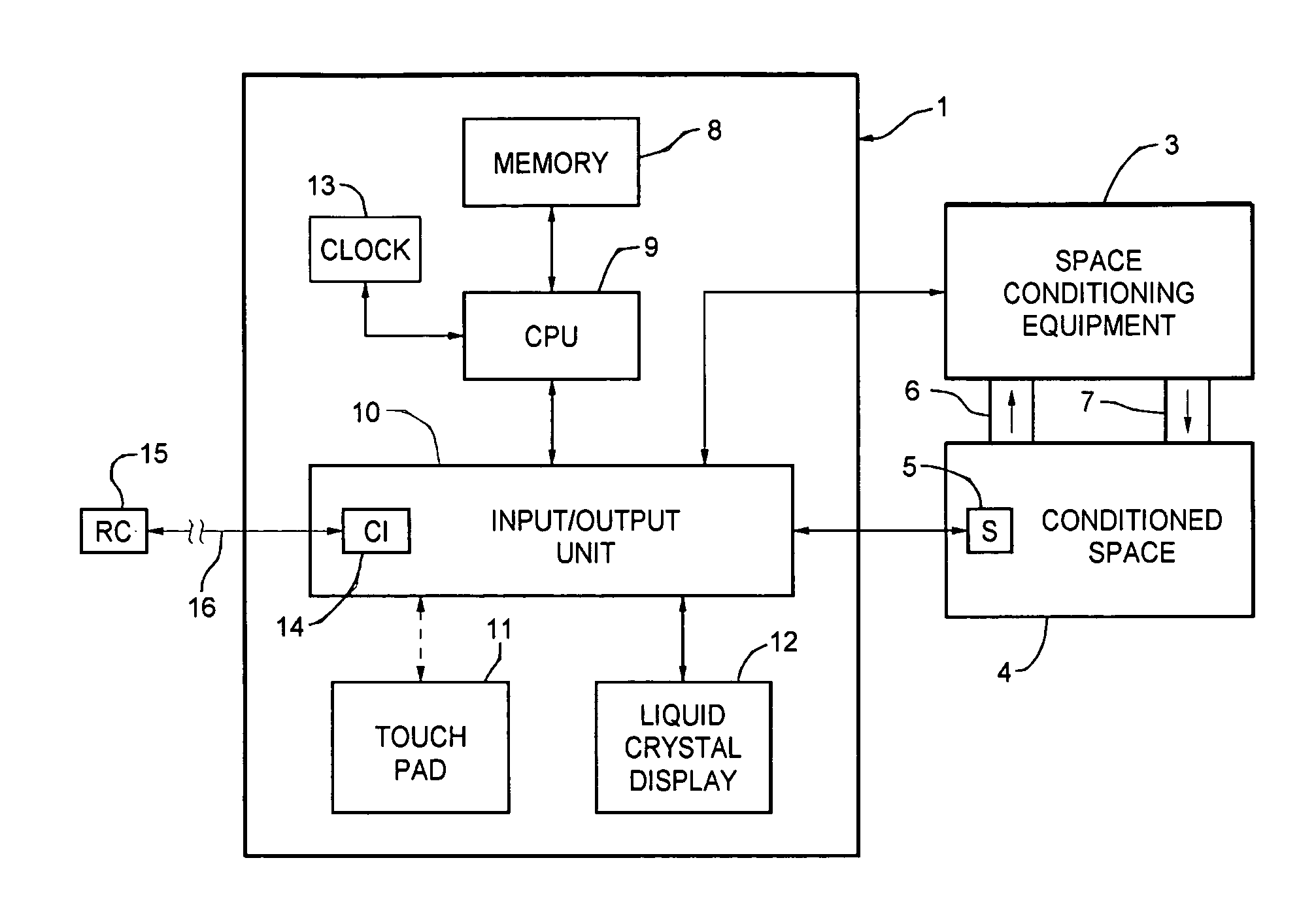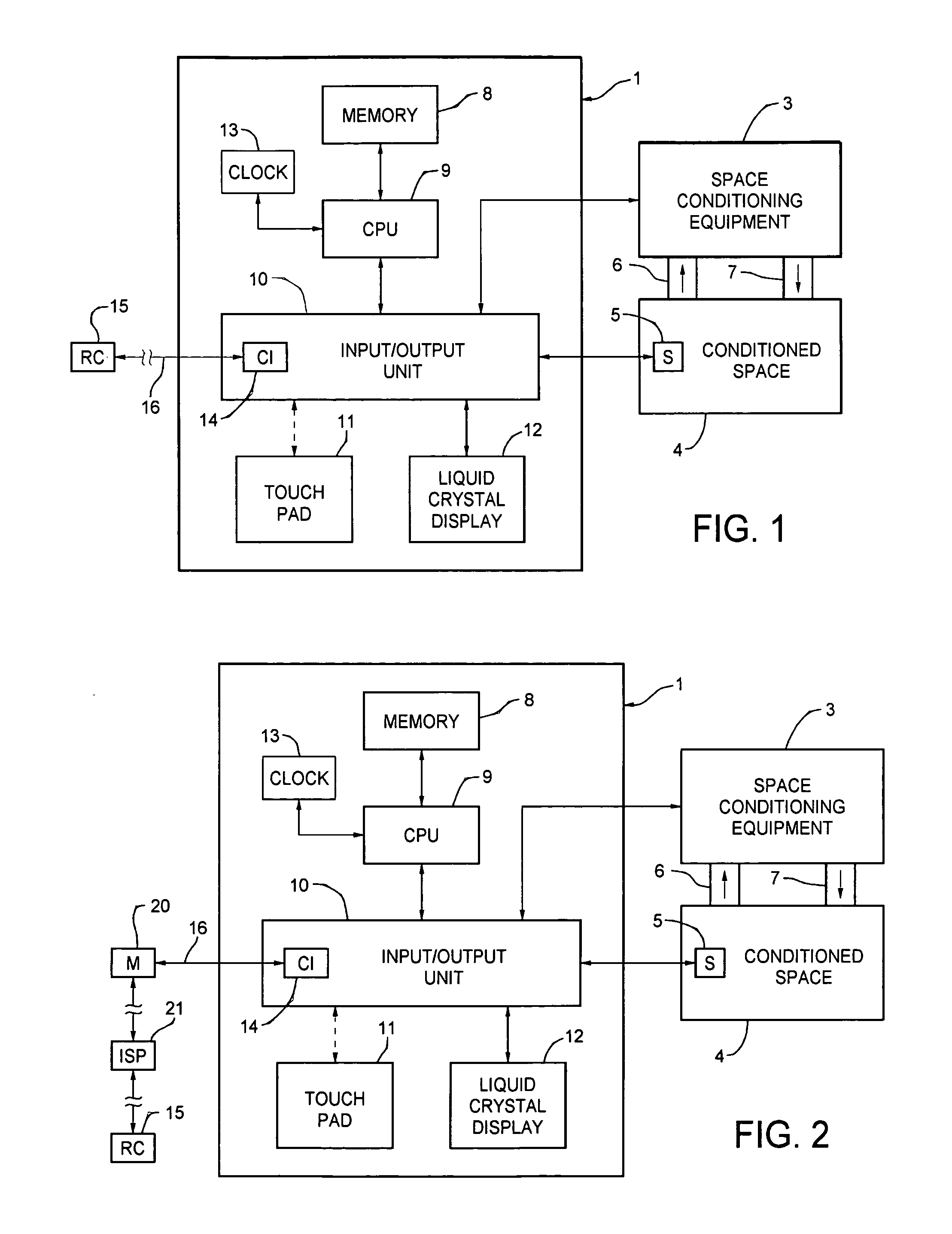Thermostat system with touchscreen with user interfaces or operational algorithms via a remote correspondent
a technology of thermostats and touchscreens, applied in the field of thermostats, can solve the problems of incomprehensible information or operational interfaces of programmable thermostats, failure to understand extended functionality capabilities, and inability to understand extended functionality, etc., and achieve the effect of facilitating intuitive programming
- Summary
- Abstract
- Description
- Claims
- Application Information
AI Technical Summary
Benefits of technology
Problems solved by technology
Method used
Image
Examples
first embodiment
[0037]Consider now the invention. Referring to FIG. 5 as well as FIG. 1, there is stored in the memory 8 (typically, in ASCII format) a series of key terms pertaining to a subject of interest such as the local weather. Exemplary key terms for this subject may be “temperature”, “relative humidity”, “high”, “low”, “barometric pressure”, etc. The key terms may be stored in the memory during the manufacturing process of the thermostat system or, as will be described below, by user entry using the touchpad 11 and LCD 12.
[0038]At one or more predetermined times of day (and / or on-demand if provided for in the operating program) which have been previously stored in the memory 8 and established by the clock 13, the CPU 9 starts the process shown in FIG. 5 by issuing signals to the I / O unit 10 to cause the communications interface 14 to establish communications, via link 16, with a remote correspondent 15. The remote correspondent 15 has a known data communications “address” and, in the examp...
PUM
 Login to View More
Login to View More Abstract
Description
Claims
Application Information
 Login to View More
Login to View More - R&D
- Intellectual Property
- Life Sciences
- Materials
- Tech Scout
- Unparalleled Data Quality
- Higher Quality Content
- 60% Fewer Hallucinations
Browse by: Latest US Patents, China's latest patents, Technical Efficacy Thesaurus, Application Domain, Technology Topic, Popular Technical Reports.
© 2025 PatSnap. All rights reserved.Legal|Privacy policy|Modern Slavery Act Transparency Statement|Sitemap|About US| Contact US: help@patsnap.com



